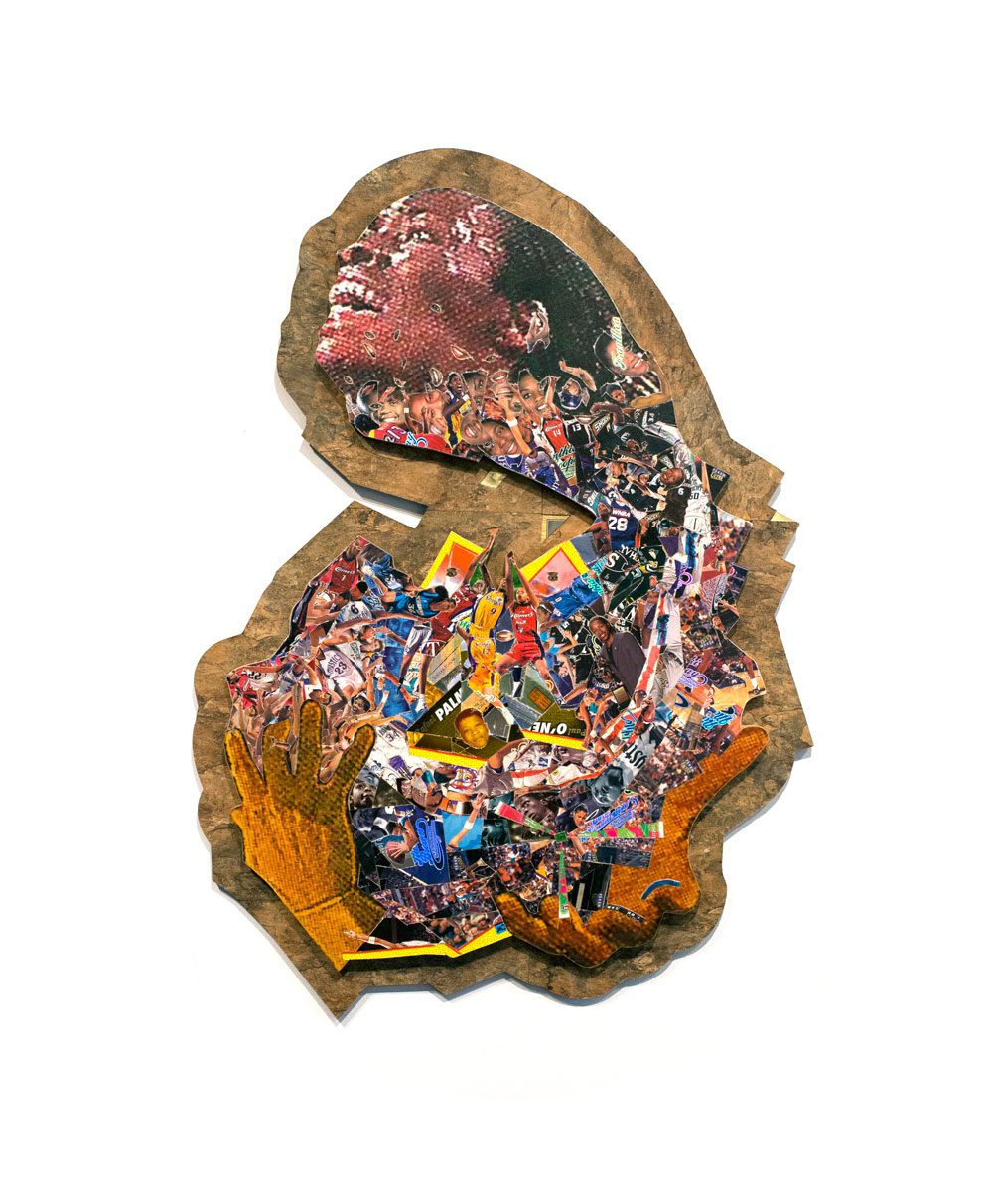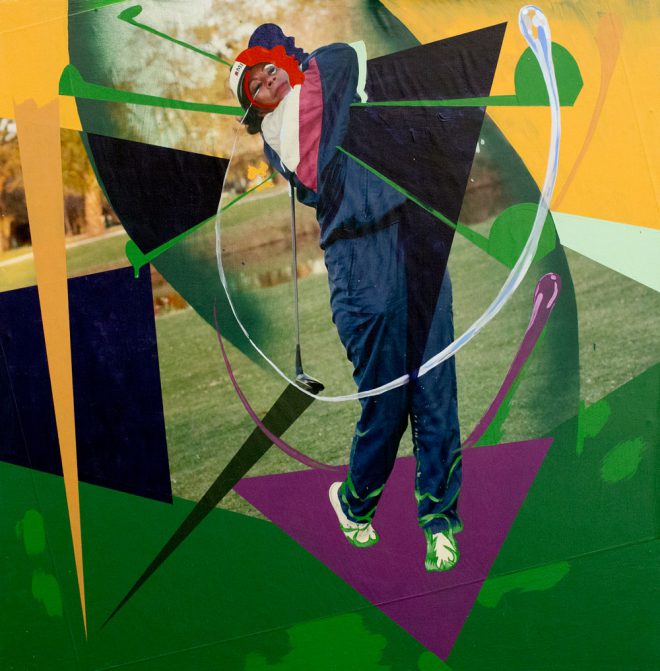Heating Up: Ashley Teamer at Fort Gansevoort
Dana Kopel looks at New Orleans-based artist Ashley Teamer’s current solo show at Fort Gansevoort in New York. Teamer’s latest collage-based works use WNBA trading cards and sports imagery as source materials.

Ashley Teamer, Who Am I, 2018. Collage with WNBA trading cards on wood. Courtesy the artist and Fort Gansevoort, New York.
Bright bursts of color and rhythmic patterns characterize Ashley Teamer’s solo exhibition at Fort Gansevoort gallery in New York. Based in New Orleans, where she is currently a local artist-in-residence at the Joan Mitchell Center, Teamer began as an abstract painter, a practice that informs the recent photo-based collages and painted works presented here.
The exhibition, titled “Rated Rookie,” features a number of images of athletes taken from vintage sports trading cards, primarily rookie cards (those featuring newly professional players) from the WNBA. Teamer cuts the figures from these cards and collages them into wall works and a freestanding sculpture in which images of bodies overlap, twist, and radiate out into abstract patterns. The wall works are mounted on wood panels that follow the contours of the collages, recalling Elizabeth Murray’s vibrant, bulbous abstractions on elaborate shaped canvases. Who Am I, 2018, features a cluster of disjointed cutouts of WNBA players’ bodies and faces, cradled within a pair of oversized hands; a woman’s head, slicked with sweat, her face signaling physical exertion, bursts from the top of the collage. ‘Splosion, 2018, similarly comprises groups of professionally toned bodies, this time arranged in a starburst, with the cards’ bright yellow edges used to demarcate layers of the titular explosion. Along with Teamer’s typical WNBA cards, repurposed in part to center female athletes within male-dominated sports fandom, this work is made from World Championship Wrestling cards that a friend gave her, emphasizing the collaborative culture of card traders.
Other wall works extend into three dimensions with the addition of thick, plasticky strokes of paint or, in the case of the punningly titled Late Bloomer, 2018, blue and purple artificial flowers. The blossoms, along with painted representations of leaves, form a frame around the edge of the work, which depicts a dribbling basketball player in Cubist-like fragmentation. By choosing to represent pop culture in this style, Teamer interpolates the black athletic body into the canon of art-historical subjects. The painted collages Greener Grass, Bluer Tears #1 and #2, both 2018, also focus on black athletes, in embellished photographs of figures that take up much of the pictorial space. Hung as a diptych, the two works are built around photos of golfers mid-swing: In #1, it’s basketball legend Michael Jordan, while its counterpart features the artist’s grandmother. These are two of the less abstracted works on view, yet both are overlaid with geometric forms, richly colored painted triangles and rounded shapes evoking the golf club’s movement across the frame.

Ashley Teamer, Greener Grass, Bluer Tears #2, 2018. Inkjet print, acrylic, and Flashe on wood. Courtesy the artist and Fort Gansevoort, New York.
The exhibition’s press release notes that, often, cards for rookie players were subject to overvaluation and speculation by collectors, who amassed them assuming they were rare, while manufacturers overproduced them. Pursued and then devalued, the cards—objects to own, collect, and trade—derive value from the intense visibility of the bodies on them. Teamer’s specific selection of cards might allude to the racialized exploitation of professional sports and the sinister ways in which black people have, under white supremacy, been conceived of as objects in opposition to white (or non-black) subjects. In particular, Teamer’s works suggest sport as a locus of visibility and erasure, commodification and exhaustion, of black athletes, bringing to mind some of Hank Willis Thomas’ works—such as his photograph The Cotton Bowl, 2011, which draws an explicit parallel between professional sports and the legacy of slavery.
The athletes whose rookie cards Teamer repurposes might, like the cards themselves, be understood as commodities, hyped up and then considered disposable by those in power—team owners, fans, and the industry at large. Yet Teamer’s collages are nonetheless buoyant, even optimistic. They serve as sincere celebrations of the black women (and others) whose athleticism and dedication inspire countless people, while remaining critical of the systems that hold them up and bring them down.
Editor's Note
Ashley Teamer’s “Rated Rookie” is on view through June 16, 2018, at Fort Gansevoort (5 Ninth Avenue) in New York.



